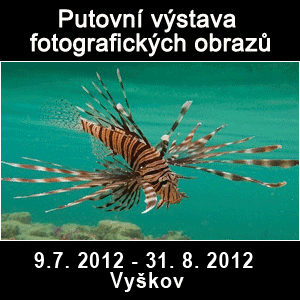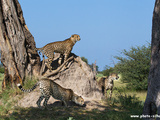 FOTO SAFARI BOTSWANA 2011
FOTO SAFARI BOTSWANA 2011
On Monday February 28th we returned from our Photo Safari Botswana 2011. I have to claim that Botswana did not disappoint us as usually. We were lucky not only in terms of weather, but also in terms of animals. So far we have managed to photograph the almost extinct African wild dogs every time and this year was not an exception. In Lebala Camp we had the opportunity to watch approximately 12-member Southern kennel for two days not only during resting or by water lit, but also during hunting. As another photographic specialty I can mention for example photography of leopard or three cheetah males. I do not even have to talk about the great amount of bird species nesting in the Okavango delta…
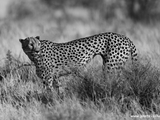 SAMBURU
SAMBURU
At the end of last year we organized second Photo Safari with main emphasis on Kenyan national park Samburu. We spent there approximately one week and later continued to Great Rift Valley, where we photographed at lakes Baringo, Bogoria and Nakuru.
This trip was little different by its conception from our usual Photo Safaris. We slept under the tents in the middle of wilderness for full two weeks. It is not necessary to add that you can get to know Africa closely during camping in the bush.
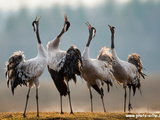 CRANES FROM HORNBORNGASJON
CRANES FROM HORNBORNGASJON
Couple days ago me, Rosťa Stach and few other friends returned from southern Sweden, particularly from the Hornborngasjon lake. Large flocks of cranes gather here at this time every year and it is certainly an amazing sight. Cranes always fly in here before their nesting period and there are thousands of them. At the time of our stay there was approximately 12 400 cranes in the area. Visitors of the lake can find out the information about current numeration of cranes on local information board, which is daily updated. Counting of birds takes place every evening, when the birds fly to overnight on the lake. They move there in smaller flocks and the removal lasts approximately an hour. At the time of sunrise the birds comeback to the, which surround the lake and so it is possible to watch them there easily.
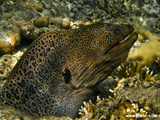 PHOTOGRAPHY IN THE RED SEA
PHOTOGRAPHY IN THE RED SEA
When I and Rosťa Stach were discussing our short vacation in Egypt at the beginning of the year, it did not even cross my mind, that only a week can be full of so many sub aqueous photographic experiences.
 60 DAYS IN MASAI MARA
60 DAYS IN MASAI MARA
Last year Vlado Bizik and I spent two months in Kenyan nature reserve Masai Mara. Vlado was directing a documentary movie about this area and I was trying to finish my almost seven year long project about the biotope Serengeti, which includes also the above mentioned Masai Mara.
We called this project „Laga 09“. Laga is a Masai expression for seasonal river and we both knew that at the time, when Kenya is tormented by huge draught, we have to look for life by the streams.
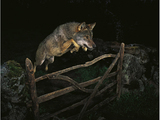 HOW TO PHOTOGRAPH WOLVES
HOW TO PHOTOGRAPH WOLVES
I know exactly how to photograph wolves. It is extremely difficult to catch them by a camera. I am not currently thinking of the wolves from Bavarian Forest or of the most well known photograph from the last time, where the wolf jumps over a closed wooden gate. However that would certainly be a fantastic picture (which technically really is), if it was really a wild animal as the author Jose Luis Rodriguez originally claimed. For those, who do not know anything about history of the above mentioned photograph I can only say that this shot won a prize of BBC Wildlife Photographer of the Year. After the jury found out, that it was not an animal living in the wild, Rodriguez had to return the prize with a great shame and scandal. You can see more at: http://www.suomenluonto.fi/…-allegations









